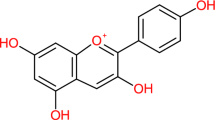Abstract
Most of the natural dyes require mordants for their fixation on textile materials. Natural mordants are thus gaining importance in order to get complete-natural dyeing. In the present work, natural dyes and mordants were extracted using conventional and ultrasound methods and comparative studies were made. The natural mordants namely harda and tamarind seed coat and natural dyes like turmeric, henna were extracted using conventional and ultrasound approaches and various extracts obtained were described in terms of their optical densities. In order to verify the extraction efficiencies, wool fabrics were dyed with extracts of various combinations of mordants/dyes and dyed fabrics were evaluated for their colour strengths and fastness properties. The extent of colour extraction was higher in case of ultrasound assisted extraction as compared to that of conventional method. The fabrics dyed using extracts of ultrasound method showed higher colour values as compared to those dyed using extracts from conventional methods thus confirming ultrasound as more efficient method of extraction.
Similar content being viewed by others
References
A. Sasson, Austral. Biotechnol., 3, 200 (1993).
T. Bechtold, A. Turcanu, E. Ganglberger, and S. Geissler, J. Clean. Prod., 11, 499 (2003).
J. K. Kumary and A. K. Sinha, Nat. Prod. Lett., 18, 59 (2004).
K. H. Prabhu, M. D. Teli, and N. Waghmare, Fiber. Polym., 12, 753 (2011).
P. S. Vankar, Resonance, 5, 73 (2000).
K. Khanbabaee and T. Van Ree, Nat. Prod. Rep., 18, 641 (2001).
S. G. Papadaki, M. C. Krokida, D. G. Economides, A. G. Vlyssides, and E. G. Koukios, Chem. Eng. Trans., 29, 7 (2012).
P. K. Mishra, P. Singh, K. K. Gupta, H. Tiwari, and P. Srivastava, Indian J. Fibre Text. Res., 37, 83 (2012).
H. C. Tiwari, P. Singh, P. K. Mishra, and P. Srivastava, Indian J. Fibre Text. Res., 35, 272 (2010).
V. Sivakumar, J. L. Anna, J. Vijayeeswarri, and G. Swaminathan, Ultrason. Sonochem., 16, 782 (2009).
M. M. Kamel, R. M. El-Shishtawy, B. M. Youssef, and H. Mashaly, Dyes Pigment., 73, 279 (2007).
H. M. Mashaly, Man-Made Text. India, 49, 448 (2006).
M. M. Kamel, R. M. El-Shishtawy, B. M. Yussef, and H. Mashaly, Dyes Pigment., 65, 103 (2005).
E. R. Trotmann, “Dyeing and Chemical Technology of Textile Fibres”, Charles Griffin and Company Ltd., England, 1984.
ISO Technical Manual, Geneva, Switzerland, 2006.
Author information
Authors and Affiliations
Corresponding author
Rights and permissions
About this article
Cite this article
Sheikh, J., Jagtap, P.S. & Teli, M.D. Ultrasound assisted extraction of natural dyes and natural mordants vis a vis dyeing. Fibers Polym 17, 738–743 (2016). https://doi.org/10.1007/s12221-016-5031-0
Received:
Revised:
Accepted:
Published:
Issue Date:
DOI: https://doi.org/10.1007/s12221-016-5031-0




